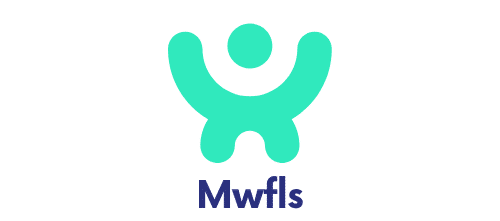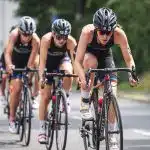From the local soccer fields to the grandeur of the Olympic Games, the issue of gender equality in sports is gaining more attention and advocacy than ever. International sports federations are at the forefront, propelling changes to ensure equal participation, representation, and leadership opportunities for both men and women. Today, we delve deeper into these efforts, and analyze how international sports federations are working towards gender equality.
Breaking Barriers in Participation
In the realm of sports participation, girls and women have historically faced numerous barriers. Yet, over recent years, strides to promote equal participation have been made across a variety of sports and events.
A lire également : What Are the Challenges of Balancing Environmental Sustainability with Sports Events?
The International Olympic Committee (IOC) is a prime example of an international organisation that has embedded the principle of gender equality in its charter, ensuring that men and women have an equal number of events at the Olympic Games. From the addition of new women’s events to the introduction of mixed-gender team sports, the IOC is ensuring that female athletes have the same opportunities as their male counterparts.
However, the IOC isn’t alone in its pursuit of equality. Other international sports federations are also addressing the participation gap. For instance, FIFA, the global governing body for football, has made significant strides in promoting the women’s game, with the Women’s World Cup reaching an all-time high in viewership during its last edition.
Dans le meme genre : What’s the Role of Analytics in Developing Winning Strategies in Team Sports?
Promoting Leadership Positions for Women
The playing field isn’t the only place where gender biases exist. Representation at the leadership level is equally critical. Currently, the representation of women in decision-making positions within international sports organisations leaves much to be desired.
However, change is afoot. The IOC’s Gender Equality Review Project, which includes a comprehensive set of 25 recommendations, emphasises the importance of ensuring gender balance in sports leadership. It advocates for a minimum of 30% female representation in IOC membership. Furthermore, it recommends that all National Olympic Committees have gender equality in their leadership positions by 2020.
Moreover, the Federation Internationale de Volleyball (FIVB) is establishing the Women’s Leadership Mentor Programme to foster female leaders. This initiative aims to mentor women in roles such as coaching, refereeing, and administrative positions, thus promoting gender diversity within the federation.
Ensuring Equal Pay in Sports
One area where the gender gap is most glaring is in pay. There are significant disparities in earnings between male and female athletes in various sports. However, the tide is slowly turning.
Instances of international sports federations taking the lead in this sphere are increasing. The International Surfing Association (ISA) became one of the first international federations to introduce equal prize money for men and women at its World Championships. In tennis, both the Wimbledon and the US Open began awarding equal prize money to men and women since 2007.
This trend for equal pay is spreading to other sports too. The International Federation for Equestrian Sports (FEI) and the International Triathlon Union (ITU) have also committed to awarding equal prize money to male and female competitors at their World Championships.
Addressing Gender Stereotypes in Sports
While increasing participation, leadership, and pay equality are significant steps towards gender equality, addressing gender stereotypes is equally important.
Sports federations like the IOC have realised this and are actively working to eliminate gender-based stereotypes from their operations and events. This includes changes in the way sports are broadcasted and covered, with an aim to portray male and female athletes equally.
Moreover, organisations like the Women’s Sport Foundation are pushing for changes in the way girls and sports are viewed, challenging the misconception that sports are predominantly a male domain.
Conclusion
International sports federations are undeniably making progress towards gender equality in sports. They have embraced their role as leaders in this drive, and are making significant strides in terms of participation, leadership, pay equality, and addressing gender stereotypes. However, it is clear that further work is needed. As the guardians of sport, these federations must continue to demonstrate their commitment to gender equality, not just in words, but also in actions.
Gender equality in sports is not just about fairness, but also about nurturing an environment where everyone, irrespective of their gender, has an equal opportunity to flourish and reach their potential. This is a goal that we should all strive to achieve. Let us hope that the efforts of these international sports federations continue to inspire and motivate us to work towards a more equitable sporting world.
Implementing Policies to Foster Equality
It’s crucial to understand that policy-making represents a key aspect when it comes to achieving gender equality in the sports world. International sports federations have grown more aware of this and are working tirelessly to develop and implement policies aimed at promoting gender equality across the board.
The International Olympic Committee, for instance, has consistently been revising its policies to be more inclusive. The IOC’s Agenda 2020, a strategic roadmap for the future of the Olympic Movement, strongly emphasizes the importance of gender balance among athletes and officials. This includes the introduction of mixed-gender events and a commitment to achieving 50% female participation in the Olympic Games. Furthermore, the IOC’s Gender Equality Review Project aims to address policy changes required to improve gender balance in leadership, participation, and safeguarding the interests of women athletes.
Still, the IOC isn’t the only international federation taking a stand. The International Federation of Association Football (FIFA) has also developed a comprehensive women’s strategy that outlines clear targets to increase the participation of girls and women in football, promote more women in leadership roles, and ensure that women are protected in football environments.
Combatting Gender-Based Violence in Sports
Unfortunately, the world of sports isn’t immune from the issue of gender-based violence. To ensure a safe and inclusive environment, sports federations have started to take steps to combat this issue and protect women athletes.
The IOC, for instance, has developed a toolkit for safeguarding athletes from harassment and abuse in sport. This includes guidelines to help National Olympic Committees and International Federations develop policies and procedures to protect their athletes from any form of abuse. Also, the IOC has promoted an educational program designed to raise awareness about harassment and abuse in sports, aiming to equip athletes with knowledge and resources to recognize, resist, and report instances of abuse.
Similarly, FIFA, in its mission to ensure the safety and dignity of everyone involved in football, has established a zero-tolerance policy on discrimination, including gender-based violence. The federation has implemented rigorous regulations and sanctions to penalize those guilty of such misconduct.
Conclusion
The path towards total gender equality in sports is undoubtedly a challenging one. Yet, the efforts and commitments of international sports federations are indeed commendable. They have been instrumental in breaking barriers and championing change, whether by increasing participation and representation, implementing equal pay, promoting inclusive policies, confronting gender stereotypes, or combating gender-based violence.
Nevertheless, there’s still a significant journey ahead. International sports federations must continue to evolve, innovate, and challenge the status quo. They need to keep pushing for more representation, better policies, and stronger enforcement mechanisms. They also need to advocate for more women in leadership roles, more female coaches, and more opportunities for girls in sport.
Ultimately, gender equality in sport is about more than just levelling the field of play. It’s about creating a world where every individual, regardless of their gender, has the same opportunity to enjoy sports, to compete, and to excel. It’s about fostering a culture of respect, inclusion, and equal opportunity for all. Let’s continue to strive for this goal and hope that the efforts of these federations will continue to inspire, encourage, and drive us towards a more equal and inclusive sports world.
















